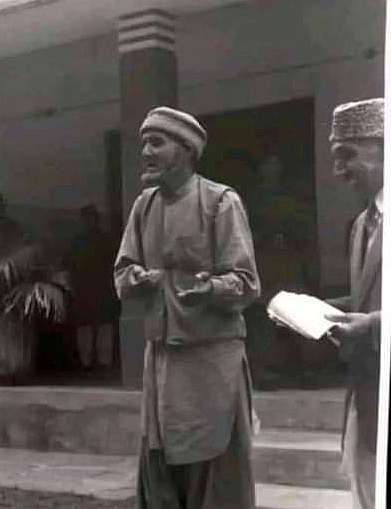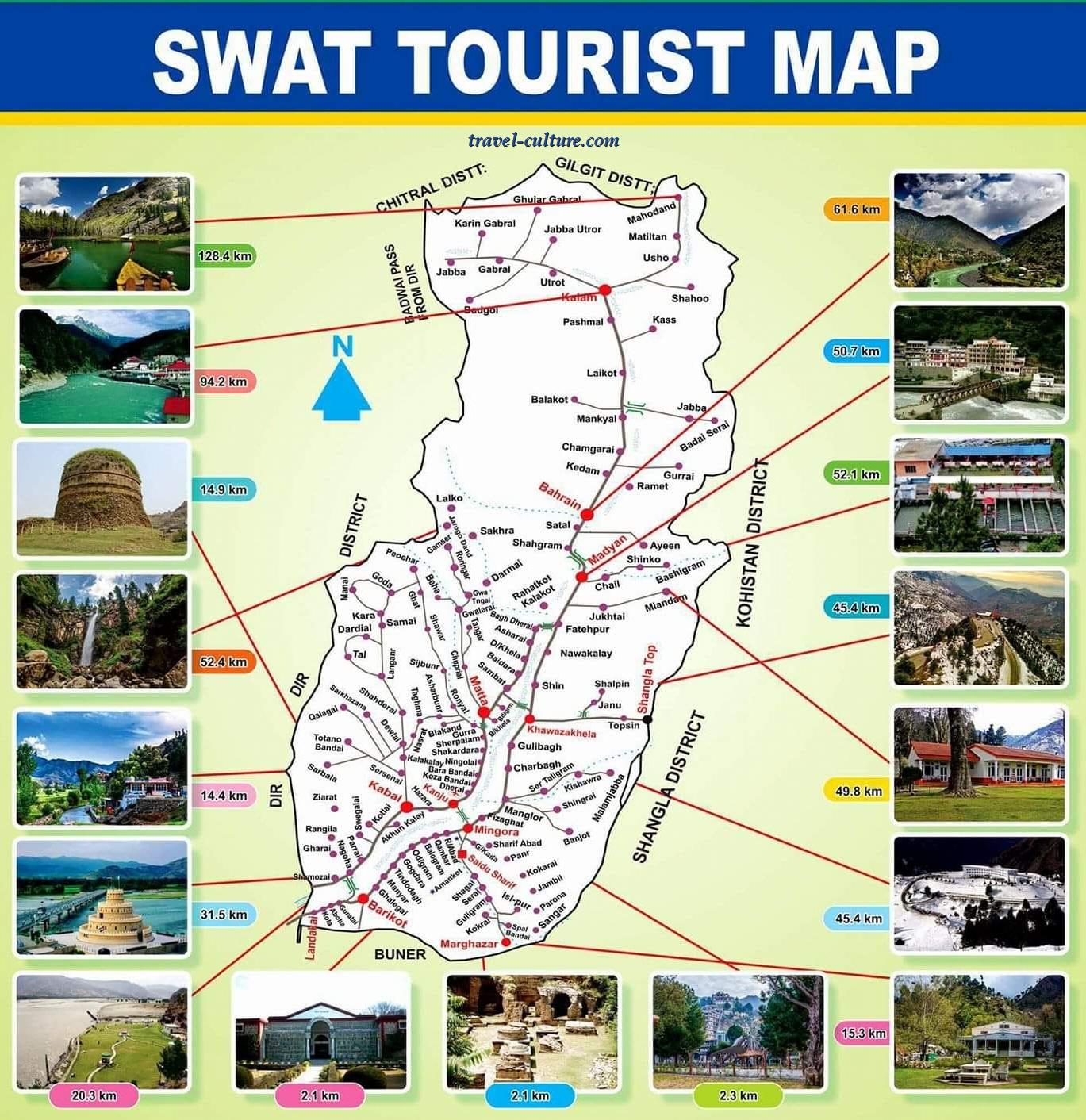Swat Valley

Who or Why, or Which or What,
is the Akhund of Swat?
Is he tall or short, or dark, or fair,
Does he sit on a stool or sofa, or chair
or squat
The Akhund of Swat?
Is he wise or foolish young or old?
Does he drink his soup and his coffee cold,
or Hot,
The Akhund of Swat?
Some one, or no body knows Iwot,
Who or which or, why or what
is The Akhund of Swat?
( Written By Edward Lear 1862 . Akhund of Swat was the
king of Swat before English He was a sufi who led his nation. Later after
the English conquest English made His Son Jehanzeb the Wali (Owner) of Swat and in 1969
Swat came in full control of Government of Pakistan.
Swat is known as the Switzerland of Pakistan. The river
Swat is a clear water river starting from the Ushu rage of mountains to the spread of the
valley of Swat. It is on of the most green valleys of the Northern Pakistan and is well
connected to the rest of Pakistan. There are regular flights from Islamabad to Swat and
back. One can also get here either from Peshawar (160 KMs) or Islamabad.(250 KMs) The
valley of Swat is located in the middle of foothills of Hindukush mountain range. The main
town of the valley is Mingora and Saidu Sharief.
Swat is a place for leisure Lover , Hikers , and archeologist. There are
many comfortable hotels where one can stay a while to relax. In Kalam upper Swat there are
some very pleasant walks since weather is pretty pleasant one can easily walk over the
hills for hours and enjoy the unspoiled nature. The Swat is garden of Ashoka and was a
prosperous land in the Buddhist times (2nd BC to 5 AD) There are at least over 100
archeological sites in the valley less then 10% of the are excavated. One can explore some
of those sites in a half day tour of Swat.
Hotels In Swat
There are many hotels in different towns of the valley.
Swat Serena Hotel Swat
Swat Continental Hotel Swat
Hotel White Palace Swat Swat
PTDC Malam Jabba Ski Resort Swat
PTDC Motel Miandam Swat
PTDC Malam Jabba Ski Resort Swat
PTDC Motel Miandam Swat
PTDC Motel Saidu Sharief Swat
Rockcity Resort Swat Swat
PTDC Motel (Saidu) 3*
Hotel White Palace (Marghazar) 2*
PTDC Motel Miandam 2*
Grace Hotel (Madyan) 2*
PTDC Motel (Kalam) 2*
Transfers to & From Swat Valley
Islamabad or Peshawar to Swat
250 KMs 5- 6 Hours. Drive in the morning from Islamabad stop at the confluence of
Kabul & Indus rivers later continue to Swat via Charsadha, stop at different village
bazaars and pass the Malakand pass. One can have Lunch at a local restaurant on the way.
After Malakand pass you enter the valley of Swat. View the Churchill's picket and
Shingardar Stupa on the way. Takht e Bhai most well preserved Buddhist monastery is on the
way before Malakand pass time permitting can visit this archeological site too. (This will
make the trip about 7- 8 Hours )
Swat - Besham
110 KMs 3 Hours. Leave Saidu Sharief via the upper Swat road at Khwaza khela we
will take a right turn to the Shangla pass (7000 Ft) Road is lush green with numerous
kinds of flora and pine trees. Have a local Pakistan tea at the pass and continue to
Besham . Besham is the first main town as you come from Swat on the Karakorum Highway.
Tours
Half day Saidu Sharief
Visit the Swat museum, Butkara archeological site ( Where there are 215 Votive
stupas and one main Stupa from 2nd century BC - 5th Century AD ) Also have a detailed walk
in Mingora bazaar and shop some of the best shawls and handicrafts of the region.
Half Day Archeological Sites
Visit Butkara1 Butkara 2 , Udegaram , and Shingardar Stupa all sites of the Kushans Period. Later a detailed lecture in Swat museum
on the chronology of Swat.
Full Day upper Swat valley.
Drive upto Kalam visit the bazaars of Madyan & Bahrain. At Kalam have a short
walk in the hills. Late Afternoon return to Saidu.
Full day walk Kalam to Ushu
A dream of a hiker. Great scenic walk through the green mountains to the glacier
of Ushu have picnic on the way return to Kalam coach or walk back.
Full day Malam Jaba & Miandam
Visit these magnificent points above 7000 ft. Have a stroll in the villages and
enjoy the green scenery. Evening visit Marghazar White palace Hotel .
History of Swat Written by Jamal Panhwar
Swat valley has a history dating back to about 2000BC, when the area was
inhabited by Indus valley inhabitants and were making pottery similar to that of
Mohen Jo Daro. In 516BC the area was under the persians and was known as the
Gandhara the eastern most province of persia. In 325BC Alexander came here it is
sait that Alexander was in hurry when he came to Swat he was unable to spend
time here, Local people in
Swat valley even today say that if he had time to relax at the bank of Swat
River and felt the cool breeze coming from the snow capped Ushu mountain and had listened to the echo of the flutes coming from the mountain of the
valley he would
never have left this heaven on earth and today his grave would have been here.
300 years later Kanishka did feel the romance of this valley and left the
busy city of Peshawar carrying his capital on horses horses and came to Swat
Valley he made Swat the capital of his Gandhara kingdom and remained here. This
made Swat a place for Buddhism where Buddhism flourished and reached at its
height. The numerous articles found from different archeological sites are the
proof of a prosperous and joyful era of this valley.
In the 6th century AD white Huns came and destroyed every site of the
Buddhism and wounded and killed the loving people of the valley, After the
attack of White Chinese monk and historian Huns Hyun Sang came for pilgrimage of this valley and sadly wrote
that most of 1400 monasteries of Swat are either burned or abundant and have been
ruined, Most of the monks have left or are dead, those who remain do talk about
the Buddhism but they themselves don't know the meaning of the teachings of
Buddha.
Huan Sang wrote this account of the valley and took all the written material
on 40 horses to china, Although Huan Sang wrote this 1500 years ago but it seems
he is talking about what is happening now in this beautiful heaven on earth.
Even After the brutal invasion of White Huns Swat still remained a
pilgrimage place for Buddhist was was ruled and inhabited by Buddhists until
Sultan Mehmood of Ghani invaded Swat and last Buddhist Raja Geera was
overthrown.
In the end of 15th century this valley was invaded by the Afghan Yousuzais,
they pushed the inhabitants of this valley towards the Indus valley thus a new
region and nation emerged by the name of Hazara which is still the name of the
region and the name of the people living near the confluence of river Indus and
Kabul. The new comer Yousufzais were not as bad as White Huns they developed
Military rules and their King Sardar Sheikh Milli even wrote poetry which was
known at the Conquest of Swat.
Bayazid Ansari wrote his Biography and wrote books like Khairul Bayan which
was a book about the laws distribution of land and rules of division. Akhund
Zada Daweza wrote "Tazkerah" and "Makhzan" all these were marked as the base of
Pushto literature. These two books are considered as the master pieces of
Persian and Pushto literature of those days. Akhund Darweza Baba held many
religious discussions with Bayazid Ansari.
In 1050 AD great poet of Pushto Khushal Khan Khattak came to Swat. During his
stay in Swat, he wrote "Swat Nama" in verse. It was a great contribution to Pushto literature in Swat.
"Swat Nama" contains the geographical, cultural,
political and historical aspects of the Swat of those days.
After Moghuls in the middle of the 19th century two local rulers Akbar Shah &
Mubarak Shah ruled Swat they both tried to rule according to the religion and the
culture but as English took over their rule come to an end. From 1863 to 1915
this region was ruled by the neighboring state of Dir than one day the tribes
men of Swat held a Jirga in Kabal and they chose Mian Gulshan Zada Abdul Wudood
as the Wali of Swat. Mian Gul Wudood was crowned in 1916 and he was popularly
called as Bacha Saheb of Swat.
Bacha Saheb was a progressive ruler British accepted his
kingdom as semiautonomous Kingdom, he was entitled for a salute of 15 Guns He
made Pushto the official language replacing Persian for the first time lands
were allotted to the people according inheritance which generated a new era of
Khans (Land Lords) who got along well with the king but wanted to keep the poor
and farmers underdeveloped.
Mian Gul Bacha Saheb also got a constitution made up of
religious and cultural teaching and named it "Fatavi Wudidia"
Touris Map of Swat Valley

Travel & Culture Services Pakistan

Advertise on this site click for advertising rates

